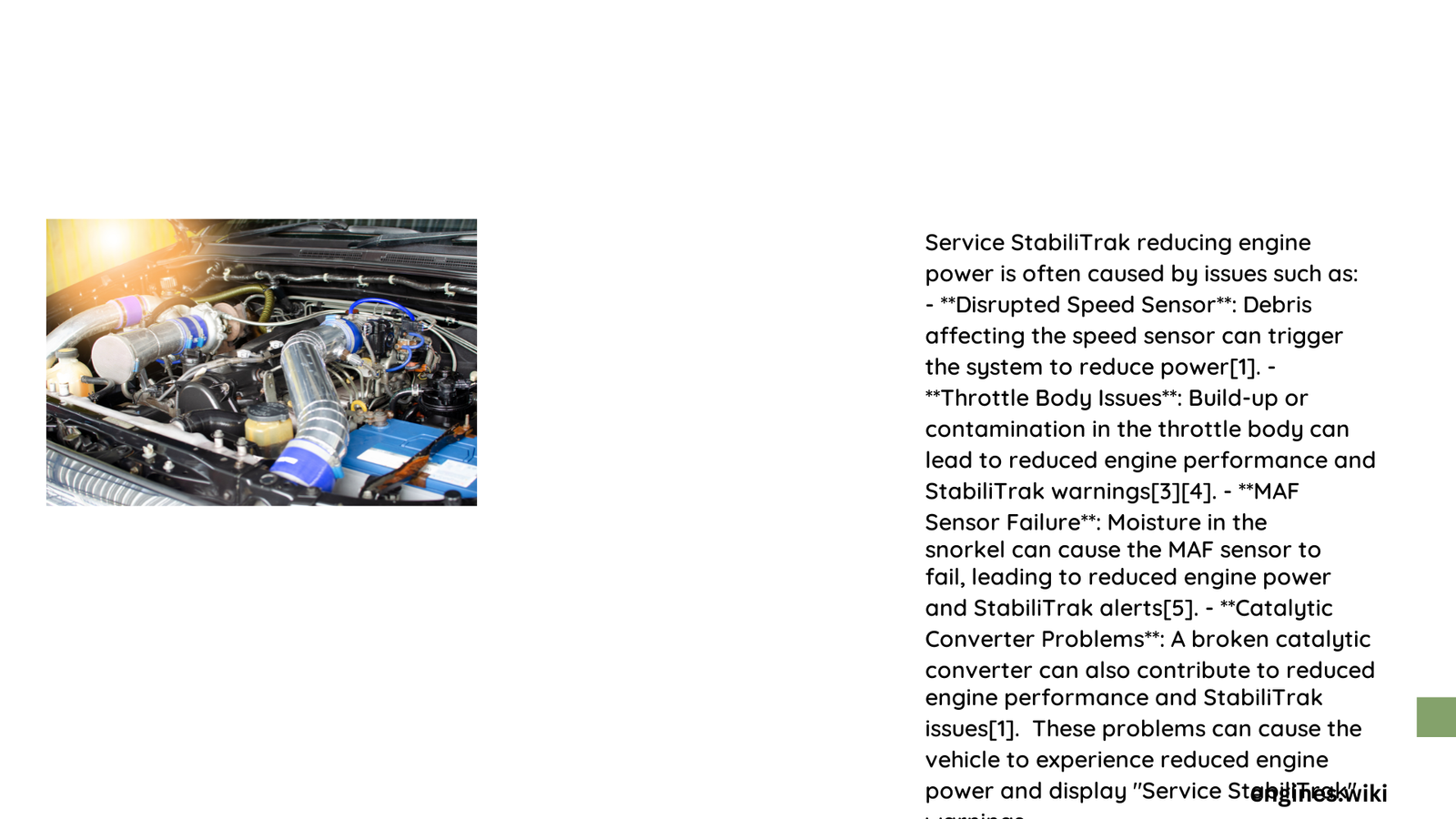When your vehicle’s Service Stabilitrak warning light illuminates alongside a reduced engine power message, it signals a critical system malfunction that demands immediate attention. This complex interaction between your vehicle’s stability control and engine management system can compromise driving safety and performance, potentially stemming from sensor failures, electrical issues, or mechanical complications that require precise diagnostic intervention.
What Triggers Service Stabilitrak and Reduced Engine Power?
Can Wheel Speed Sensors Cause Performance Issues?
Wheel speed sensors are primary culprits in Stabilitrak-related performance problems. These critical components monitor wheel rotation and transmit data to the vehicle’s computer system.
Key Sensor-Related Symptoms:
– Intermittent warning lights
– Sudden power reduction
– Unpredictable vehicle handling
– Erratic throttle response
| Sensor Component | Potential Issue | Estimated Repair Cost |
|---|---|---|
| Wheel Speed Sensor | Electrical Failure | $50 – $200 |
| Steering Angle Sensor | Misalignment | $200 – $500 |
| Throttle Body | Mechanical Obstruction | $100 – $300 |
How Do Electrical Systems Interact with Stabilitrak?
The Stabilitrak system relies on complex electrical interactions between multiple vehicle sensors. When these sensors provide conflicting or incorrect information, the system defaults to a protective reduced power mode.
Diagnostic Electrical Checklist:
1. Check battery voltage
2. Inspect wiring harness for damage
3. Verify sensor connections
4. Use OBD-II scanner for precise diagnostics
What Are Common Mechanical Triggers?
Mechanical issues can also precipitate Stabilitrak and reduced engine power warnings:
- Throttle Body Complications
- Carbon buildup
- Mechanical wear
-
Electrical connector problems
-
Brake System Interactions
- ABS module malfunction
- Brake pressure sensor failures
- Hydraulic system irregularities
Can Environmental Factors Impact Stabilitrak Performance?
Environmental conditions significantly influence Stabilitrak system functionality:
- Temperature Extremes
- Cold weather sensor sensitivity
-
Heat-related electrical resistance changes
-
Driving Conditions
- Rough terrain impact
- Frequent stop-and-go driving
- Accumulated road debris
What Professional Diagnostic Steps Should You Take?
Recommended Professional Diagnostic Process:
1. Comprehensive computer system scan
2. Detailed sensor performance analysis
3. Visual inspection of electrical connections
4. Test drive to replicate conditions
5. Precise component testing
How Expensive Are Potential Repairs?
Repair costs vary based on specific vehicle models and identified issues:
- Minor Repairs: $100 – $300
- Sensor cleaning
- Electrical connection restoration
-
Software recalibration
-
Major Repairs: $500 – $1,500
- Complete sensor replacement
- Extensive electrical system repair
- Advanced computer module intervention
Final Recommendations

When experiencing Service Stabilitrak and reduced engine power:
– Do not ignore warning signs
– Avoid prolonged driving in reduced power mode
– Consult certified automotive technicians
– Use professional diagnostic equipment
Pro Tip: Many issues can be resolved through systematic troubleshooting and precise component replacement.
Technical Expertise Required
While some diagnostics can be performed independently, complex Stabilitrak system issues often require specialized knowledge and advanced diagnostic tools.
Reference:
– GM Technical Service Bulletin
– SAE Automotive Engineering Journal
– National Highway Traffic Safety Administration
